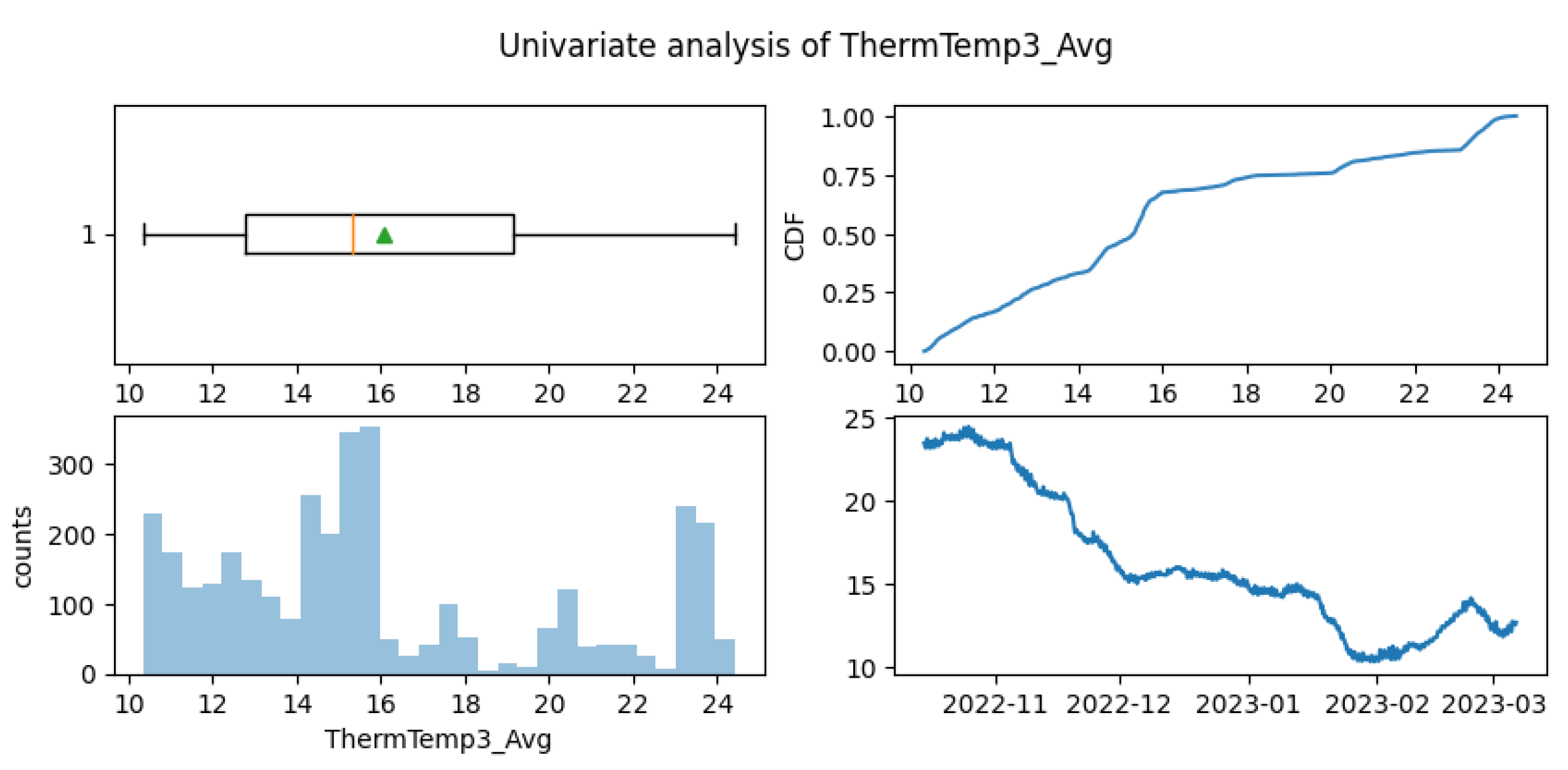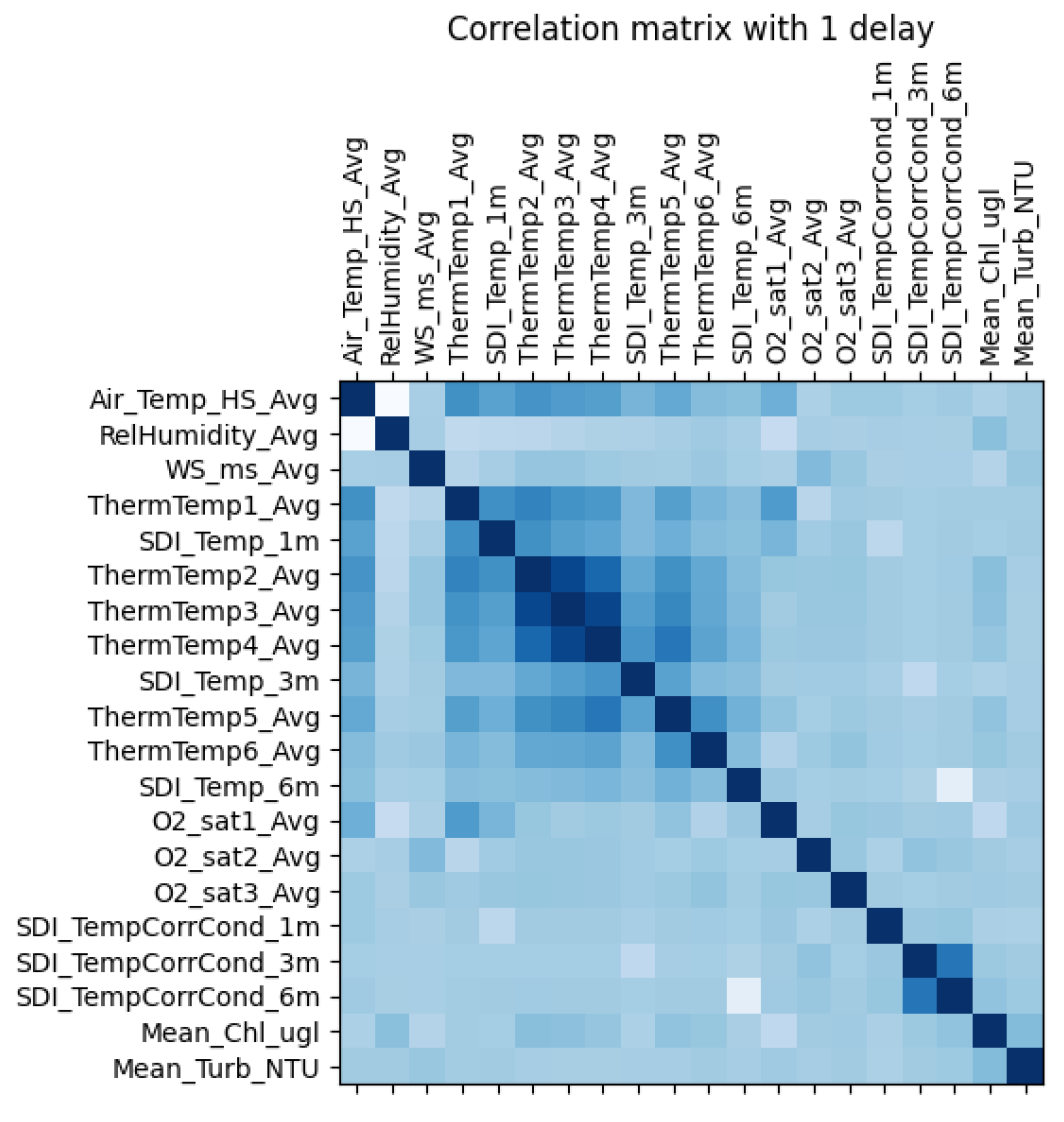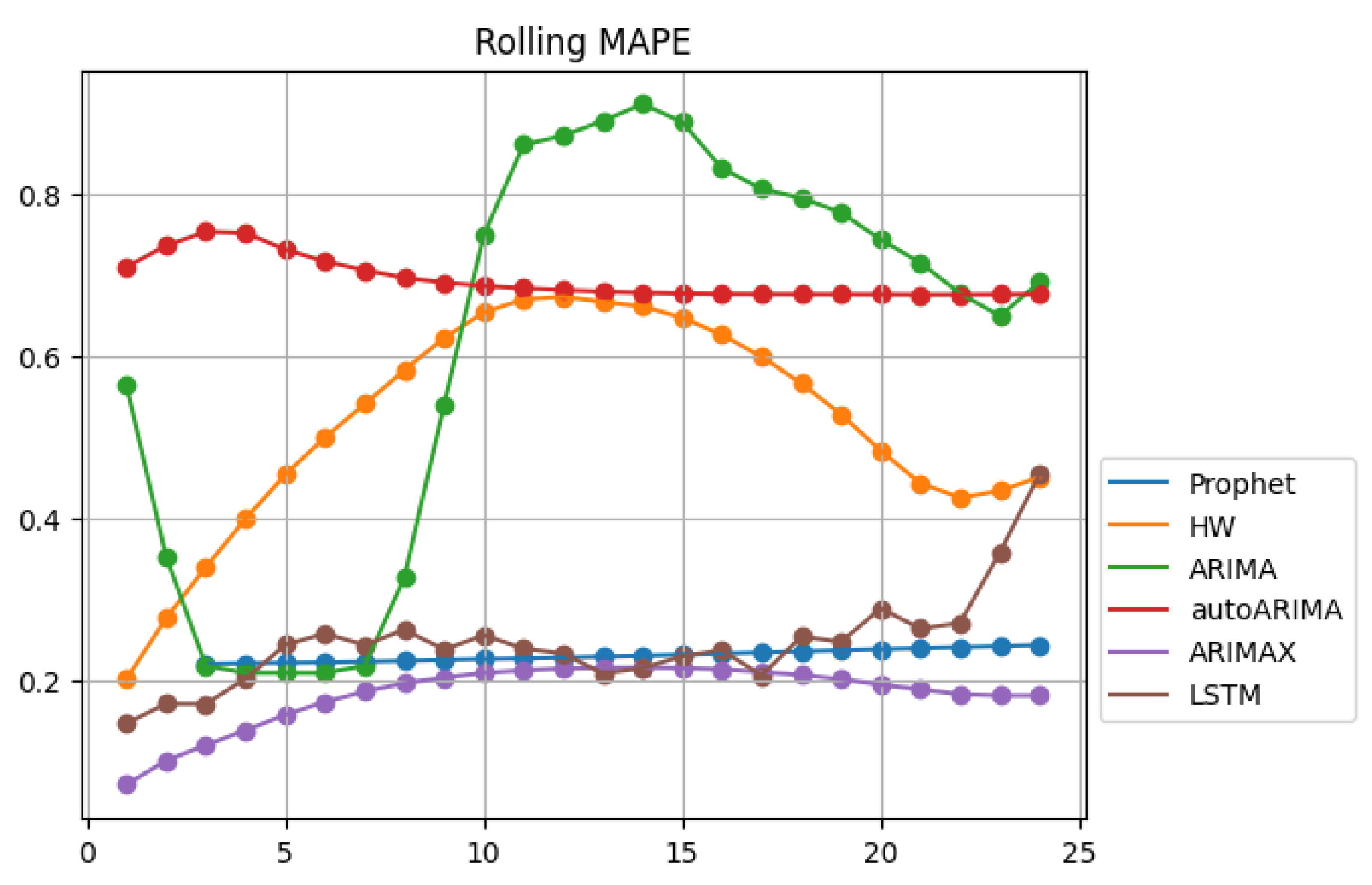Chlorophyll-A Time Series Study on a Saline Mediterranean Lagoon: The Mar Menor Case †
Abstract
:1. Introduction
2. Related Work
3. Materials and Methods
3.1. Framework
3.2. Data Analytics Roadmap
4. Discussion and Evaluation
5. Conclusions
Author Contributions
Funding
Institutional Review Board Statement
Informed Consent Statement
Data Availability Statement
Conflicts of Interest
References
- Sandonnini, J.; Del-Pilar-Ruso, Y.; Cortés-Melendreras, E.; Giménez-Casalduero, F. Massive aggregations of serpulidae associated with eutrophication of the mar menor, southeast iberian peninsula. Front. Mar. Sci. 2020, 7, 531726. [Google Scholar] [CrossRef]
- Li, P.; Zhao, N.; Zhou, D.; Cao, M.; Li, J.; Shi, X. Multivariable time series prediction for the icing process on overhead power transmission line. Sci. World J. 2014, 2014, 256815. [Google Scholar] [CrossRef] [PubMed]
- Mozetič, P.; Solidoro, C.; Cossarini, J.; Socal, G.; Precali, R.; Francé, J.; Bianchi, F.; De Vittor, C.; Smodlaka, N.; Fonda Umani, S. Recent trends towards oligotrophication of the northern adriatic: Evidence from chlorophyll a time series. Estuaries Coasts 2010, 33, 362–375. [Google Scholar] [CrossRef]
- Niebauer, J.H.; Alexander, V.; Henrichs, M.S. A time-series study of the spring bloom at the bering sea ice edge i. physical processes, chlorophyll and nutrient chemistry. Cont. Shelf Res. 1995, 15, 1859–1877. [Google Scholar] [CrossRef]
- Schalles, F.J.; Gitelson, A.A.; Yacobi, Z.Y.; Kroenke, E.A. Estimation of chlorophyll a from time series measurements of high spectral resolution reflectance in an eutrophic lake. J. Phycol. 2002, 34, 383–390. [Google Scholar] [CrossRef]
- Cen, H.; Jiang, J.; Han, G.; Lin, X.; Liu, Y.; Jia, X.; Ji, Q.; Li, B. Applying deep learning in the prediction of chlorophyll-a in the east china sea. Remote Sens. 2002, 14, 5461. [Google Scholar] [CrossRef]
- Barzegar, R.; Aalami, M.T.; Adamowski, J. Short-term water quality variable prediction using a hybrid cnn–lstm deep learning model. Stoch. Environ. Res. Risk Assess. 2020, 34, 415–433. [Google Scholar] [CrossRef]
- Ouaissa, S.; García-Gómez, C.; Moreno-Ostos, E.; Mercado-Carmona, J.M. Variabilidad del FitopláNcton en la Laguna Costera mar Menor Durante un Periodo de Eutrofización Severo. Available online: https://agris.fao.org/search/en/providers/122367/records/6474804cbf943c8c79883d30 (accessed on 26 August 2024).
- Mercado, J.M.; Cortés, D.; Gómez-Jakobsen, F.; García-Gómez, C.; Ouaissa, S.; Yebra, L.; Ferrera, I.; Valcárcel-Pérez, N.; López, M.; García-Muñoz, R.; et al. Role of small-sized phytoplankton in triggering an ecosystem disruptive algal bloom in a mediterranean hypersaline coastal lagoon. Mar. Pollut. Bull. 2021, 164, 111989. [Google Scholar] [CrossRef] [PubMed]
- Xu, J.; Hu, Y.; Liu, H.; Mi, W.; Li, G.; Guo, J.; Feng, Y. A novel multivariable time series prediction model for acute kidney injury in general hospitalization. Int. J. Med. Informatics 2022, 161, 1386–5056. [Google Scholar] [CrossRef] [PubMed]
- Pierson, D. Innovative Modelling Approaches for Predicting Socio-Environmental Evolution in Highly Anthropized Coastal Lagoons. Available online: http://www.smartlagoon.eu/wp-content/uploads/2021/11/SMLG_D2.1_Report-on-sensing-technologies_VF.pdf (accessed on 26 August 2024).
- E+E Elektronik EE181 Air Temperature and Humidity Sensor. Available online: https://www.campbellsci.com/ee181-l (accessed on 26 August 2024).
- RM Young Wind Sentry Anemometer. Available online: https://www.campbellsci.com/03101-sentry-anemometer (accessed on 26 August 2024).
- SeaBird ECO Dual Channel Fluorometer. Available online: https://www.seabird.com/eco-flntu/product?id=60762467722 (accessed on 26 August 2024).
- Aanderaa Oxygen Sensors. Available online: https://www.aanderaa.com/oxygen-sensors (accessed on 26 August 2024).
- CR1000X: Measurement and Control Datalogger. Available online: https://www.campbellsci.com/cr1000x (accessed on 26 August 2024).
- CH200: Smart 12 V Charging Regulator. Available online: https://www.campbellsci.com/ch200 (accessed on 26 August 2024).
- Díaz, J.C.G. Series Temporales, Análisis, Predicción, Ejercicios Prácticos; Universidad Politécnica de Valencia: Valencia, Spain, 2011. [Google Scholar]
- Taylor, S.J.; Letham, B. Forecasting at scale. PeerJ 2017, 5, e3190v2. [Google Scholar] [CrossRef]
- Hochreiter, S.; Schmidhuber, J. Long short-term memory. Neural Comput. 1997, 9, 1735–1780. [Google Scholar] [CrossRef] [PubMed]






Disclaimer/Publisher’s Note: The statements, opinions and data contained in all publications are solely those of the individual author(s) and contributor(s) and not of MDPI and/or the editor(s). MDPI and/or the editor(s) disclaim responsibility for any injury to people or property resulting from any ideas, methods, instructions or products referred to in the content. |
© 2024 by the authors. Licensee MDPI, Basel, Switzerland. This article is an open access article distributed under the terms and conditions of the Creative Commons Attribution (CC BY) license (https://creativecommons.org/licenses/by/4.0/).
Share and Cite
Garcá-i-Cucó, A.; Gellida-Bayarri, J.; Chafer-Dolz, B.; Cano, J.-C.; Cecilia, J.M. Chlorophyll-A Time Series Study on a Saline Mediterranean Lagoon: The Mar Menor Case. Eng. Proc. 2024, 68, 65. https://doi.org/10.3390/engproc2024068065
Garcá-i-Cucó A, Gellida-Bayarri J, Chafer-Dolz B, Cano J-C, Cecilia JM. Chlorophyll-A Time Series Study on a Saline Mediterranean Lagoon: The Mar Menor Case. Engineering Proceedings. 2024; 68(1):65. https://doi.org/10.3390/engproc2024068065
Chicago/Turabian StyleGarcá-i-Cucó, Arnau, José Gellida-Bayarri, Beatriz Chafer-Dolz, Juan-Carlos Cano, and José M. Cecilia. 2024. "Chlorophyll-A Time Series Study on a Saline Mediterranean Lagoon: The Mar Menor Case" Engineering Proceedings 68, no. 1: 65. https://doi.org/10.3390/engproc2024068065







